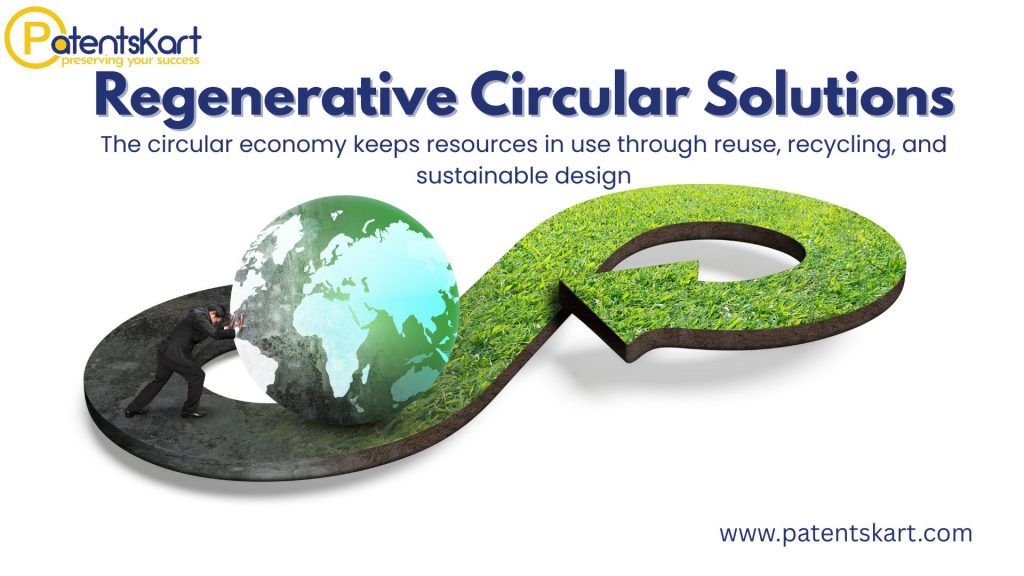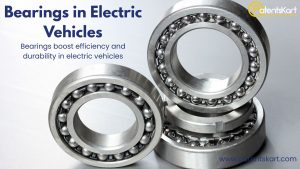What Is the Circular Economy and Why Does It Matter Today?
The world is shifting from a linear “take, make, dispose” model to a system that emphasizes keeping resources in use for as long as possible. This system is called the circular economy, and it’s becoming a cornerstone of global sustainability strategies. Businesses, governments, and innovators are rethinking how goods are produced, consumed, and recycled.
In this blog, we’ll break down the meaning of the circular economy, explore industry-specific use cases, uncover how intellectual property (IP) plays a role, and highlight opportunities for innovators.
How Does the Circular Economy Differ from the Linear Economy?
The traditional linear economy follows a one-way flow: raw materials are extracted, used to manufacture products, and eventually discarded as waste. By contrast, the circular economy emphasizes:
- Reduction of resource consumption.
- Reuse of products to extend their life cycle.
- Recycling of materials into new products.
- Recovery of energy or value from waste.
This approach not only reduces environmental impact but also creates economic resilience, enabling industries to operate more efficiently and sustainably.
Which Companies Are Leading the Circular Economy Movement?”
- Veolia & Suez → Waste management and recycling leadership.
- BASF & Dow → Chemical recycling and circular plastics innovation.
- Carbios & PureCycle → Pioneering plastic-to-plastic recycling technologies.
- Umicore & Sims Metal Management → Advanced e-waste metal extraction.
- Apple & Dell → Closed-loop electronics and refurbishment systems.
- IKEA & Toyota → Circular product design and zero-waste manufacturing.
Why Is the Circular Economy Becoming a Global Priority?
Several factors are driving the urgency of adopting a circular economy model:
- Climate change: Resource-efficient systems lower greenhouse gas emissions.
- Economic resilience: Companies save costs by reducing dependency on virgin raw materials.
- Consumer demand: Eco-conscious buyers prefer brands that align with sustainable values.
- Government regulations: Countries are rolling out policies and incentives to push businesses toward circularity.
Global organizations like the European Union (EU) and the United Nations (UN) are integrating circular strategies into climate and development goals, making adoption not just optional, but essential.
What Industries Benefit the Most from the Circular Economy?
It has applications across multiple industries, and each is finding innovative ways to embed circular practices:
- Manufacturing: Designing products for disassembly, using modular components, and recycling production waste.
- Electronics: Repair and refurbishment programs to extend gadget life cycles.
- Automotive: Remanufacturing parts and using recycled materials in vehicle production.
- Textiles: Recycling fabrics and promoting second-hand fashion markets.
- Packaging: Transitioning from single-use plastics to biodegradable or reusable packaging solutions.
These changes not only conserve resources but also open new revenue streams through eco-innovation.
How Does Intellectual Property Support this Innovation?
Patents, trademarks, and copyrights play a crucial role in fostering a circular economy. Innovation thrives when businesses can protect their ideas while contributing to sustainability goals. Some fast-growing patent domains include:
- Chemical recycling technologies for plastics.
- Bio-based materials that replace petroleum-derived inputs.
- Smart waste sorting systems powered by AI and robotics.
- Circular design software that optimizes resource use.
By securing intellectual property, companies can monetize innovations while contributing to a greener future.
What Are the Main Barriers to a Circular Economy?
While promising, this economy faces several challenges:
- Economic: High upfront costs for transitioning from linear to circular models.
- Technical: Limited scalability of advanced recycling and recovery technologies.
- Cultural: Consumer hesitation toward refurbished or recycled products.
- Policy gaps: Lack of standardized regulations across regions.
Overcoming these barriers requires collaboration between governments, private sector players, and consumers.
How Do Global Policies Encourage the Circular Economy?
Governments worldwide are pushing businesses toward circularity with legislation and incentives:
- EU: Circular Economy Action Plan mandates eco-design and waste reduction targets.
- China: Promotes eco-industrial parks and strict recycling laws.
- India: National Resource Efficiency Strategy aligns with sustainable industrial growth.
- USA: Encouraging public-private partnerships to reduce waste and boost recycling innovation.
Such regulatory measures create opportunities for innovators to thrive in markets where compliance and sustainability intersect.
What Are the Future Business Models in the Circular Economy?
New business models are evolving to align with the this economy, such as:
- Product-as-a-Service (PaaS): Customers pay for usage instead of ownership, reducing waste.
- Leasing models: Companies retain product ownership, encouraging durability and recyclability.
- Sharing economy: Platforms that enable resource-sharing reduce overproduction.
- Reverse logistics: Systems for product returns, refurbishment, and recycling.
These models improve profitability while aligning with consumer preferences for sustainable products.
How Will Technology Accelerate the Circular Economy?
Emerging technologies are key enablers of the circular economy:
- Artificial Intelligence (AI): Optimizes recycling processes and waste segregation.
- Blockchain: Tracks resources across supply chains, ensuring transparency.
- 3D printing: Reduces material waste in manufacturing.
- Internet of Things (IoT): Monitors product use, maintenance, and end-of-life recycling.
These technologies not only make circular systems viable but also scalable across global industries.
How Can Businesses Gain a Competitive Advantage with the Circular Economy?
Companies adopting circular economy practices often see:
- Cost savings from reduced material usage.
- Brand differentiation through sustainability leadership.
- Regulatory compliance that avoids fines and penalties.
- Access to green financing and ESG-focused investments.
Ultimately, these benefits create a strong competitive edge in a market increasingly defined by sustainability.
FAQs
1. What is the circular economy in simple terms?
It’s a system where resources are reused, recycled, and kept in circulation to minimize waste.
2. Which industries are most impacted by the circular economy?
Manufacturing, electronics, automotive, packaging, and textiles are leading adopters.
3. How does the circular economy help the environment?
It reduces landfill waste, conserves resources, and lowers carbon emissions.
4. What role does technology play in the circular economy?
Technologies like AI, blockchain, and IoT improve recycling efficiency and supply chain transparency.
5. Is the circular economy profitable for businesses?
Yes, companies adopting circular models often see cost savings, new revenue streams, and better brand positioning.
How PatentsKart Can Help Innovators in the Circular Economy
At PatentsKart, we specialize in supporting innovators and businesses working toward a circular economy. Our services include:
- Patent searches and filing for eco-innovation.
- IP strategy consulting for businesses adopting circular practices.
- Patent landscape analysis to identify growth opportunities.
- Global IP protection for recycling, renewable, and green technologies.
Whether you’re developing recycling systems, sustainable materials, or new business models, our team ensures your intellectual property is secured and optimized for growth.
Conclusion
The circular economy is more than a sustainability initiative—it’s a global shift that creates economic, environmental, and social value. By embracing this model, businesses can reduce costs, strengthen resilience, and gain a competitive advantage. Innovators who protect their ideas through patents will be at the forefront of this transition.
For expert support in safeguarding your circular innovations, visit www.patentskart.com or contact us at info@patentskart.com.







